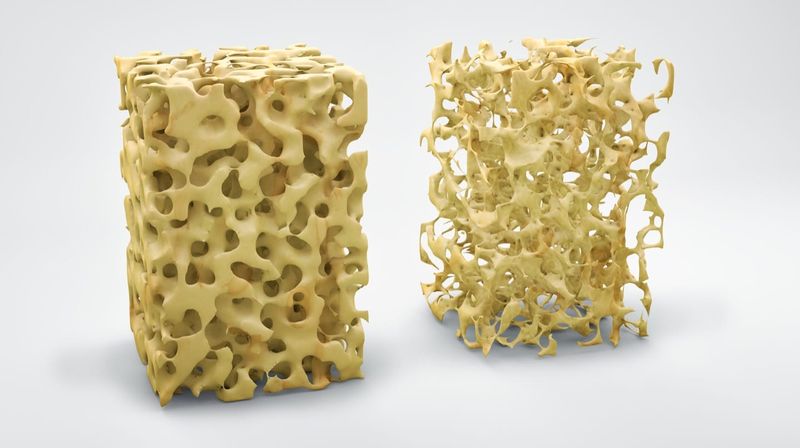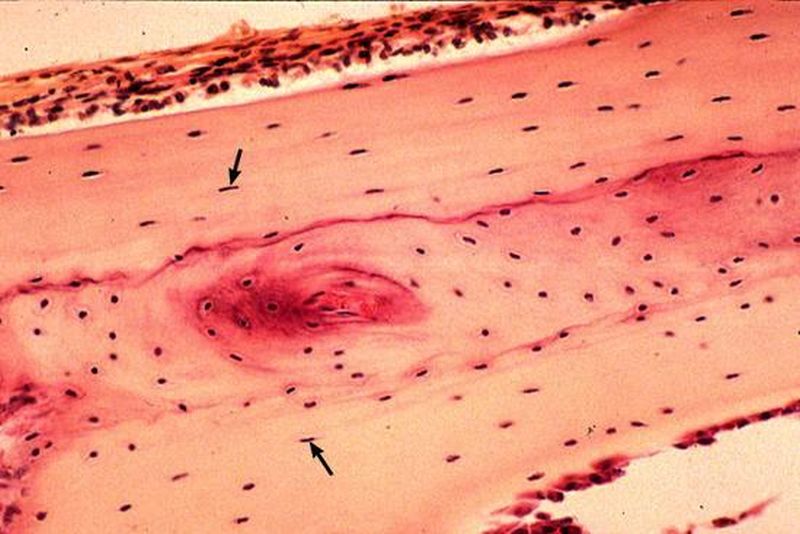Osteoporosis is a serious bone condition that causes deterioration of bone mass and strength. The International Osteoporosis Foundation (IOF) describes osteoporosis as a silent disease that causes the bones to weaken and break easily. According to Healthline, as many as 50 million in the US have osteoporosis or are at high risk of developing the condition.
The fractures occurring as a result of osteoporosis affect 3 women for every 5 men worldwide. The frequency of fracture is heightened in women above 50 years. Most osteoporotic bone breaks occur on the hip, knee and spine.
People whose vertebrae have been impacted by osteoporosis may develop debilitating conditions like kyphosis, which is commonly called hunched back. The other effects of osteoporosis include intense pain and suffering, feelings of isolation and depression and even loose of height. In terms of cost, the National Osteoporosis Foundation puts the number of broken bones each year at 2 million at a cost of $19 billion. The assessment shows the number of fractures recorded annually will rise to 3 million at a cost of more than $25 billion by 2025.
Risk factors and dangers of osteoporosis

Osteoporosis comes with a huge health and financial burden. According to Medicinet, the main risk factors for the condition include: diet, exercise, female gender, medications, alcohol and cigarette smoking. The other risk factors include age, malabsorption, low estrogen levels and amenorrhea, which infers to the loss of menstrual period among young women.
- Diet – people who consume foods with insufficient amounts of calcium and vitamin D stand a very high risk of developing osteoporosis. Calcium and vitamin D provide vital nutrients that are crucial in maintaining bone strength and improving general health.
- Exercise – doctors often encourage people to do exercises like running, dancing, hiking and weight lifting on a regular basis to maintain healthy bone mass and keep osteoporosis at bay.
- Alcoholism – excessive alcohol drinking and cigarette smoking has been shown to cause bone loss and raise the risks of fracture. Chronic alcoholism has also been shown to have a close link with impaired bone cell activity, low bone density and deterioration in bone health.
- Cigarette smoking – smoking is especially harmful because it causes changes in hormone balance and bone cell function. Nicotine based cigarettes can also cause poor calcium absorption and osteoblast, a condition that curtails the reproduction of bone producing cells.
Treatment options available to osteoporosis patients

If spotted in time, osteoporosis can easily be treated with medications. According to the Mayo Clinic, treatment may entail the use of medications and changes in lifestyle. Osteoporotic medications work by slowing the bone breakdown while rebuilding healthy bones. The medications commonly used for the treatment are called Biophosphates. The drugs include Actonel (Risedronate), Reclast (Zoledronic acid), Bomiva (Ibandronate) and Fosamax (Alendronate).
The choice of Biophosphate is determined by an array of factors, including individual preference, follow-up of the dosing schedule, convenience, and cost implications. Doctors may also prescribe hormones such as estrogen to treat and prevent onset osteoporosis. For the safety of the patient, the doctor will prescribe the lowest, but effective hormonal dosage. According to Mayo Clinic, the hormone-like medications approved for treating and preventing osteoporosis include:
- Teriparatide (Forteo) – due to its ability to rebuild bones, Teriparatide is prescribed to patients of all genders. The drug is particularly effective in women with low bone density and fractures.
- Abaloparatide (Tymlos) – Abaloparatide is a relatively new medication that works as efficiently as Teriparatide in helping rebuild the bone. The drug is typically taken for a duration of 2 years. Abaloparatide is still undergoing clinical testing to gauge its effectiveness and safety.
- Denosumab (Xgeva) – Denosumab is a new osteoporosis medication that has been found effective in delineating the risk of fracture in osteoporotic patients. The doctor can prescribe the medication to patients who react to Biophosphates. For example, patients with kidney problems.
Before prescribing osteoporosis medication, the healthcare provider will first analyze the patient’s age, sex, gravity of the loss bone and general health. In terms of gender, there are special osteoporosis drugs that are approved for women and men. Certain osteoporosis medications are also effective for younger, post-menopausal women and older females with various health issues. Osteoporosis drugs may not be prescribed to healthy post-menopausal women.
The health care providers often pay close attention to the patient’s health status before prescribing medications as a strategy to limit the adverse effects. For instance, patients who are suffering from a blood clots or breast cancer may suffer serious health problems when issued estrogen-based medications. Because of the negative side effects, patients who’ve undergone treatment with radiation may not be issued drugs such as Abaloparatide and teriparatide.
The patient’s personal preferences also play a huge role in treatment as it has an impact on the overall treatment outcome. The healthcare provider will first analyze the patient’s preferred treatment; feelings about a particular drug and dosage frequency. Osteoporosis drugs are usually administered in the form of pills, injection, and medications. Researchers are increasingly looking up to Hormone Replacement Therapy to provide solutions for osteoporosis sufferers.

A clinical study published by the National Institute of Health (NIH) website shows a treatment regimen combining Hormone Therapy (HT treatment featuring estrogen and progesterone) and estrogen therapy (ET) can effectively prevent bone loss and increase Bone Mineral Density (BDM). A positive therapeutic effect is derived when Estrogen Therapy and Hormone Therapy interacts with the estrogen receptors found on the bone cells.
The study also found Hormone Therapy to be effective in reducing the risk of women suffering from clinical spine and hip fractures. The FDA has approved a number of Hormonal Osteoporosis Therapies to treat bone fractures that happen around the spine and hip. In spite of huge promises, Hormone Therapy was not found effective in diminishing the effects of stroke, Coronary Heart Disease (CHD), breast cancer, and Pulmonary Embolism (PE).
Local Growth Hormone Treatment

The HGH Therapy Clinic specializes in providing Hormone Replacement Therapy for people of both genders. The team of endocrinologists working at the clinic is highly qualified and has many years of experience working with patients requiring HRT. Men and women undergoing treatment must first obtain a medical prescription. As a safety measure, the clinic only prescribes official medications that have been clinically tested and approved. Patients also need to undertake blood tests and other medical tests as prescribed by the doctor.
The clinic uses growth hormones to help older GH deficient women and men minimize the risk of osteoporosis fractures. You can get in touch with qualified endocrinologists by visiting hghtherapydoc.com and filling out the contact form or just call them today to set up an appointment. Also, you can get more information about osteoporosis and high benefits for fracture healing at their website.
The hormone also helps post-menopausal women suffering osteoporosis maintain high bone density. HGH Therapy Clinic does not in any way promote or sell HGH supplements for bodybuilders and does not work with children suffering HGH insufficiency. Tests and treatments are carried out in a conducive testing environment to promote speedy diagnosis and recuperation. You can get in touch with qualified Human Growth Hormone endocrinologists by visiting the HGH Therapy Clinic website or call today to set up an appointment.


